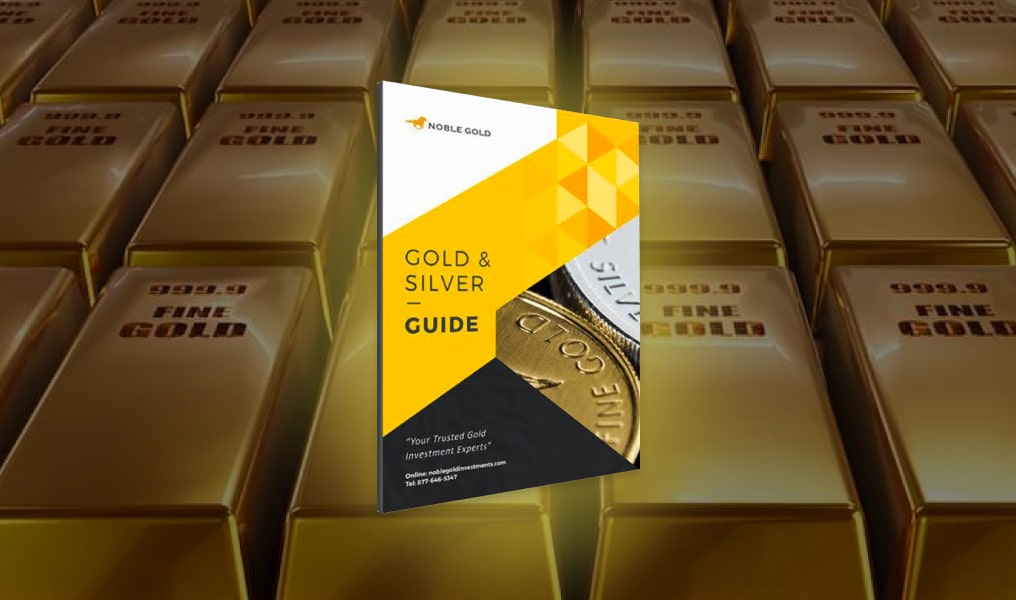Precious metals Individual Retirement Accounts (IRAs) have become a popular way to diversify investment portfolios against the volatility of traditional securities. These self-directed IRAs allow an individual to secure a portion of their retirement with tangible assets such as gold, silver, platinum, and palladium. However, not all precious metal products qualify for inclusion. The IRS has set forth specific requirements for precious metals to be held in an IRA, ensuring they meet certain standards of purity and authenticity.
Under the guidelines, allowable precious metals include certain bullion coins, bars, and rounds. For gold, the IRS mandates a fineness of .995 or higher, except for the American Gold Eagle coins, which are permitted despite having a lower fineness. Silver, platinum, and palladium products must have a fineness of .999 or better. These investment-grade metals must be produced by a national government mint or an accredited refiner, assayer, or manufacturer. The Taxpayer Relief Act of 1997 was instrumental in expanding the types of precious metals allowed in IRAs, including U.S. Treasury-minted coins and certain foreign coins that satisfy the requisite purity standards.
The inclusion of these assets offers IRA holders a way to invest in a physical, non-paper asset within their retirement accounts, which can serve as a hedge against inflation and currency devaluation. Recognizing the suitable precious metals for an IRA is crucial for any investor wishing to include these in their retirement planning. The market offers a variety of IRA-approved products to choose from, each with the potential to contribute positively to a diversified retirement strategy.
Eligible Precious Metals for IRAs
The Internal Revenue Service (IRS) has specific regulations on which precious metals can be included in an Individual Retirement Account (IRA). These metals must adhere to purity and fineness requirements to qualify.
Gold
Gold is one of the most popular precious metals purchased in IRAs as well as in general. First and foremost, IRA-eligible gold products must meet the minimum fineness requirement of 0.995 purity. Eligible gold options typically include:
- Bullion coins: These are legal tender coins whose market value is determined by their gold content rather than face value. Examples include the American Gold Eagle (which is an exception to the fineness requirement, as it is 22 karat or 0.9167 fine), the American Gold Buffalo, the Canadian Gold Maple Leaf, and the Austrian Gold Philharmonic.
- Bars and rounds: These must come from manufacturers that are accredited by NYMEX/COMEX, LME, LBMA, NYSE/Liffe/CBOT, and ISE-9000 or a national mint. Examples include Credit Suisse gold bars, Johnson Matthey gold bars, and other similar products that meet fineness standards.
Silver
Silver has always been a popular precious metal but has become especially popular as its available supply continues to shrink. IRA-eligible silver products must have a fineness of at least 0.999. This includes:
- Bullion coins: Such as the American Silver Eagle, the Canadian Silver Maple Leaf, the Austrian Silver Philharmonic, and the Australian Silver Kookaburra.
- Bars and rounds: These must be produced by a manufacturer accredited by any of the aforementioned exchanges or an assayer that is ISO 9000 certified. Examples include Royal Canadian Mint silver bars, Sunshine Minting silver bars, and other high-purity silver bullion products.
Platinum
Platinum bars and coins must have a fineness of at least 0.9995 to qualify as IRA-eligible. Some of the more popular platinum investment products include:
- Bullion coins: Like the American Platinum Eagle, the Canadian Platinum Maple Leaf, and the Isle of Man Noble coins.
- Bars and rounds: These must be produced by manufacturers that meet the standards for accreditation or by an assayer that is ISO 9000 certified. This includes various platinum bars and rounds that are 0.9995 fine or higher.
Palladium
While palladium is not as popular as other precious metals like gold and silver, it’s still extremely valuable and quickly growing in popularity. Palladium products also need to have a fineness of at least 0.9995. This includes:
- Bullion coins: The American Palladium Eagle is one of the few palladium coins that meet the fineness requirement for IRA eligibility.
- Bars and rounds: Similar to gold, silver, and platinum, palladium bars and rounds from accredited manufacturers or ISO 9000-certified assayers are eligible. Examples include Valcambi palladium bars and
The Taxpayer Relief Act of 1997 expanded the range of permissible precious metal products in IRAs. It is crucial for investors to ensure that the metals they wish to include in their IRAs are compliant with these requirements to maintain the tax advantages of their retirement accounts. Investors should consult financial advisors or conduct further research to understand the detailed regulations governing these investments.
Gold IRA Rules and Regulations
In a Gold Individual Retirement Account (IRA), investors have the ability to diversify their retirement portfolio with precious metals. It’s essential to adhere to specific IRS regulations to maintain the account’s tax benefits.
Purity Standards
For gold to qualify in an IRA, it must meet the IRS purity requirement of 99.5% purity. However, an exception exists for the American Gold Eagle coin, which is allowed despite its 91.67% purity due to its legal tender status.
Custodian Requirements
An IRS-approved custodian must oversee the Gold IRA. They are responsible for:
- Transaction Facilitation: Buying and selling precious metals.
- Regulatory Compliance: Ensuring the IRA adheres to tax laws and regulations.
- Record Keeping: Documenting all transactions and maintaining accurate records.
Storage Solutions
The IRS mandates that the precious metals in a Gold IRA must be stored in a secure, IRS-approved depository. Investors cannot store their IRA gold at home or in a personal safe. Approved storage must ensure:
- Security: The depository should have advanced security features.
- Insurance: Assets held should be insured against loss or theft.
- Segregation: Metals may be segregated (separate from others’ assets) or non-segregated (commingled with others’ assets).
Contribution Limits
Contribution limits for a Gold IRA are the same as for traditional IRAs. In 2023, the contribution limit is:
- $6,000 under age 50.
- $7,000 age 50 and above.
These limits are subject to change and can be verified with the IRS or a financial advisor.
Silver IRA Guidelines
Investing in silver through an Individual Retirement Account (IRA) follows strict rules established by the IRS. These rules ensure the purity and storage of silver that qualifies for IRA inclusion.
Approved Silver Assets
The IRS mandates that silver assets in an IRA must be 99.9% pure or better, meaning a purity grade of 0.999 or higher is required. Eligible silver products include:
- Coins: One-ounce U.S. Silver Eagles, or certain other government-minted coins meeting the fineness requirements.
- Bars and rounds: Produced by manufacturers that are accredited by NYMEX/COMEX, LME, LBMA, ISO 9000, or national government mint.
Investment Limitations
There are restrictions on the types of silver and the quantities one can include in an IRA:
- Custodian Requirements: Silver must be held by a qualified custodian.
- Storage Requirements: Silver must be stored in an IRS-approved depository; personal possession of IRA silver is not allowed.
- Contribution Limits: IRAs have annual contribution limits which also apply to precious metal assets, including silver. For 2024, the limit is $6,000, or $7,000 for those aged 50 or above.
Platinum and Palladium IRAs
Investors interested in diversifying their retirement portfolio can include platinum and palladium in their Individual Retirement Accounts (IRAs). These precious metals must meet stringent purity and production standards to be eligible for IRA investment.
Acceptable Platinum and Palladium
To be included in an IRA, platinum and palladium products must adhere to the following requirements:
- Purity: Platinum and palladium items must be at least 99.95% pure.
- Manufacturing Standards: Products should be manufactured by a national government mint or an accredited refiner, assayer, or manufacturer acknowledged by the relevant commodity exchanges such as NYMEX or COMEX.
Eligible Platinum and Palladium Items:
- Bullion bars
- Bullion coins
- Rounds
These items must be from an approved list that meets the purity and fineness criteria set forth by the controlling bodies.
Rarity Considerations
Platinum and palladium are less common than gold and silver, which might affect their availability and market price. They are considered:
- Scarce: These metals are rarer than other precious metals, contributing to their uniqueness in an IRA.
- Volatile: Prices of platinum and palladium can experience significant fluctuations due to their rarity and industrial demand.
Investors should consider these factors when incorporating platinum or palladium into their retirement strategy, as they can impact both the risk profile and potential growth of their IRA.
IRA-Approved Coins
When including coins in an Individual Retirement Account (IRA), investors must adhere to strict regulations established by the Internal Revenue Service (IRS) concerning the types of coins that are permitted. These regulations ensure that the coins meet purity and authenticity standards suitable for IRA investment.
List of Permitted Coins
- American Gold Eagle Coins: These coins are an exception to the fineness rule, as they are 91.67% pure gold (22 karats), but are still allowed.
- American Gold Buffalo Coins: These coins must be 99.99% pure gold.
- Australian Gold Kangaroo/Nugget Coins: They must meet a minimum fineness of 99.99% pure gold.
- Austrian Gold Philharmonic Coins: These coins are eligible if they are 99.99% pure gold.
- Canadian Gold Maple Leaf Coins: Permissible for IRAs, these coins are required to be 99.99% pure gold.
- Silver Coins: This includes American Silver Eagles and select other government-issued coins with a fineness of at least 99.9%.
- Platinum and Palladium Coins: Must meet the fineness criteria of 99.95% purity and be from a government mint.
Collectibles Exclusion
Coins considered to be collectibles under the IRS definition do not qualify for IRAs. This includes rare coins or those that carry value above their precious metal content due to factors like mint year, rarity, or numismatic significance. Only coins valued primarily on their metal content are IRA-eligible.
Precious Metal Bars and Bullion
Investors can include various types of precious metal bars and bullion in their Individual Retirement Accounts (IRAs), provided they comply with the IRS standards for fineness and authenticity.
Size and Weight Specifications
Precious metals in bar or bullion form must meet strict fineness requirements. To be IRA-eligible:
- Gold bars must be at least 99.5% pure,
- Silver bars should achieve a minimum fineness of 99.9%,
- Platinum and palladium bars are required to be 99.95% pure.
The size and weight of these bars and bullion can vary, but they must be produced by a national government mint or an accredited refiner.
Authentication Procedures
When adding precious metal bars and bullion to an IRA, they are subjected to rigorous authentication procedures. These procedures ensure that the metals meet the fineness and purity standards set by the IRS. For bars and bullion to qualify, they must be:
- Produced by manufacturers that are accredited by NYMEX/COMEX, LME, LBMA, ISO 9000, or a national mint.
- Accompanied by a certificate of authenticity.
- Verified through standard assaying methods to confirm their weight and purity.
Rollover and Transfer Strategies
When transferring assets to a Precious Metals IRA, investors have distinct options: direct rollovers, indirect rollovers, and transfers. Choosing the appropriate strategy minimizes taxes and penalties.
Direct Rollovers
In a direct rollover, assets are transferred directly from one retirement account to a Precious Metals IRA. The investor never takes possession of the funds, which prevents any withholding taxes and potential penalties. It’s typically initiated by completing a transfer request form.
- 401(k) to IRA: Funds move from a traditional or Roth 401(k) directly into a Precious Metals IRA.
- TSP to IRA: The Thrift Savings Plan is eligible for a direct rollover to a Precious Metals IRA.
- 403(b) to IRA: This pertains to transferring from a tax-advantaged retirement plan for certain employees of public schools and tax-exempt organizations.
Indirect Rollovers
An indirect rollover involves the temporary receipt of funds by the investor. One has 60 days to redeposit the funds into a new Precious Metals IRA before the distribution becomes taxable. Due to the risk of missing the deadline, indirect rollovers are less common.
- Receipt of Funds: The investor receives the retirement funds directly.
- 60-Day Rule: The reinvestment must occur within this time frame to avoid taxes and penalties.
Transfer Processes
In a transfer process, funds move between like IRAs—meaning from one IRA to another IRA. These can occur multiple times a year without tax consequences or penalties.
- Trustee-to-Trustee: This is the usual method where the financial institution holding your IRA transfers the funds directly to the new IRA’s financial institution.
- Same Custodian: If both IRAs are held by the same custodian, they can simply transfer the amounts to the new Precious Metals IRA account.
Tax Implications and Reporting
Holding precious metals in an IRA has unique tax implications and reporting requirements that investors must adhere to for compliance with IRS rules. You should always speak with a financial advisor and/or tax advisor before making any investments.
IRS Tax Reporting
Individuals with precious metals in their IRAs must report any contributions or distributions to the IRS. Contributions to Traditional IRAs with precious metals are often tax-deductible, whereas contributions to Roth IRAs are made with after-tax dollars and are not deductible. Distributions, however, are taxable for Traditional IRAs and tax-free for Roth IRAs, provided certain conditions are met.
Capital Gains and Distributions
When precious metals held in an IRA are sold, the capital gains are not taxed at the time of sale. Instead, for Traditional IRAs, the tax is deferred until distributions are taken, at which point the distributions are taxed as ordinary income. For Roth IRAs, both the capital gains and the distributions can be tax-free as long as the account has been open for at least five years and the owner is at least 59½ years old at the time of the withdrawal.
Want To Learn More About Opening A Precious Metals IRA?
If you’re interested in learning more about opening an account with Noble Gold Investments, our friendly customer success professionals are available to answer any questions you have about how a precious metals IRA works, what the process is like to open an account, and how you can begin saving for retirement and protecting your financial future with precious metals.
Give us a call at 877-646-5347 to speak to a member of our team, or you can click here to open your free account now.







